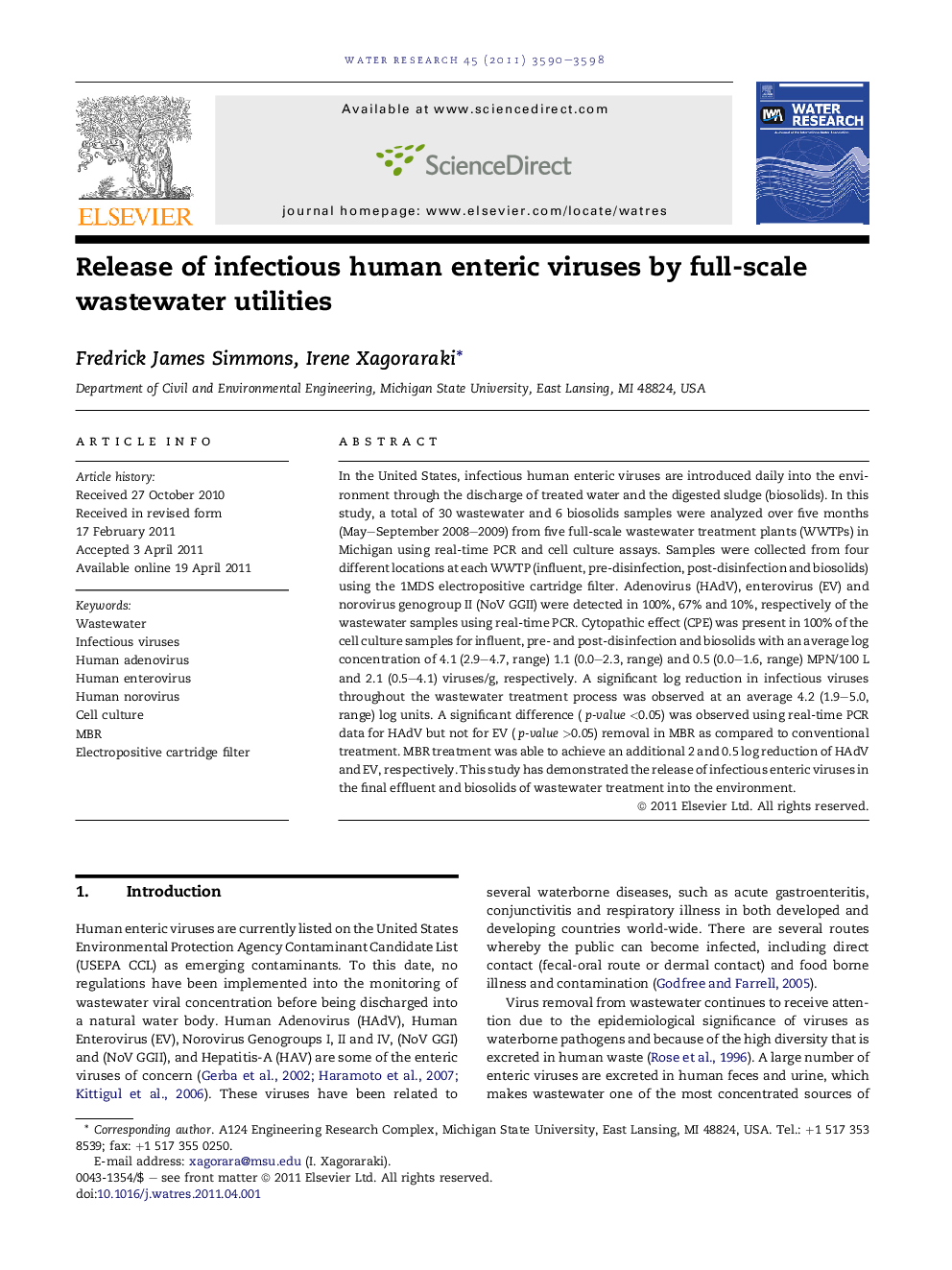| کد مقاله | کد نشریه | سال انتشار | مقاله انگلیسی | نسخه تمام متن |
|---|---|---|---|---|
| 4483015 | 1316876 | 2011 | 9 صفحه PDF | دانلود رایگان |

In the United States, infectious human enteric viruses are introduced daily into the environment through the discharge of treated water and the digested sludge (biosolids). In this study, a total of 30 wastewater and 6 biosolids samples were analyzed over five months (May–September 2008–2009) from five full-scale wastewater treatment plants (WWTPs) in Michigan using real-time PCR and cell culture assays. Samples were collected from four different locations at each WWTP (influent, pre-disinfection, post-disinfection and biosolids) using the 1MDS electropositive cartridge filter. Adenovirus (HAdV), enterovirus (EV) and norovirus genogroup II (NoV GGII) were detected in 100%, 67% and 10%, respectively of the wastewater samples using real-time PCR. Cytopathic effect (CPE) was present in 100% of the cell culture samples for influent, pre- and post-disinfection and biosolids with an average log concentration of 4.1 (2.9–4.7, range) 1.1 (0.0–2.3, range) and 0.5 (0.0–1.6, range) MPN/100 L and 2.1 (0.5–4.1) viruses/g, respectively. A significant log reduction in infectious viruses throughout the wastewater treatment process was observed at an average 4.2 (1.9–5.0, range) log units. A significant difference (p-value <0.05) was observed using real-time PCR data for HAdV but not for EV (p-value >0.05) removal in MBR as compared to conventional treatment. MBR treatment was able to achieve an additional 2 and 0.5 log reduction of HAdV and EV, respectively. This study has demonstrated the release of infectious enteric viruses in the final effluent and biosolids of wastewater treatment into the environment.
► Infectious and non-infectious viruses are released into the environment via the effluent and biosolids of wastewater utilities.
► There is a significant log reduction (2.3–4.5) in infectious viruses by the wastewater treatment process.
► The reduction in infectious viruses in effluent treated with UV or Cl ranges from 0.1 to 1.2 log units.
► An MBR system was able to achieve 2 log higher reduction of human adenoviruses as compared to conventional wastewater treatment.
► Similar human enterovirus removals were observed in MBR and conventional wastewater treatment.
Journal: Water Research - Volume 45, Issue 12, June 2011, Pages 3590–3598